All Posts (4887)
If you are a sports or super-active person who likes to experience extracurricular activities, then it is essential to use mouthguards. Mouthguards are not only for the patient wearing braces but can also be utilized by other people.
If you are into any athletic activity, such as basketball, football, hockey, or soccer, you must protect them. This is necessary to preserve your teeth; otherwise, it could harm your gums by softening their tissue, eroding them, or inducing tooth loss. But when choosing them from an orthodontist Miami Beach, it is essential to know their uses. Through this article, you will learn how you can use it to keep your smile protected. Let's dive into it.
Purpose of Mouthguards:
A shield for your braces
Consider a mouthguard to be your braces' shield. Braces can be fragile and could be damaged by a hard fall. Whether it's a rogue volleyball or an incredible elbow during a game, a mouthguard acts as a protective barrier, keeping your braces secure from harm.
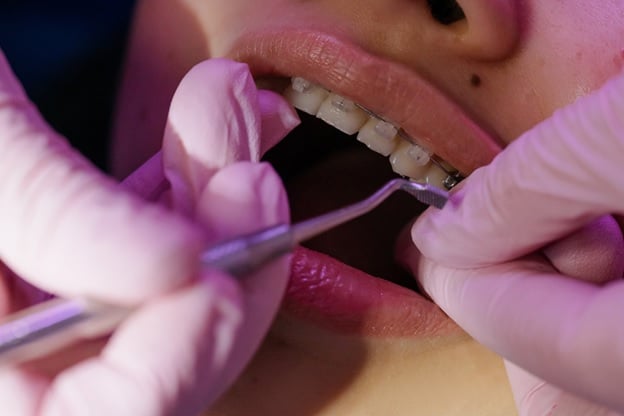
A custom fit for active lifestyles
The ones intended for braces are explicitly constructed to slide over your brackets and wires comfortably. Thanks to this mouthguard for braces, your braces will stay in place even during the most strenuous sporting events. So go ahead, score that goal, or make that slam dunk. Your mouthguard has got you covered.
A buffer against bruxism
For people wearing braces, tooth grinding or bruxism can be a severe problem. In addition to causing discomfort, the continuous pressure may harm your braces. This is where the mouthguard comes in—a silent champion that keeps your upper and lower teeth from grinding against one another. The sports mouthguard for braces functions similarly to a pillow to protect your braces while you catch those Zs.

Protection against accidents
This can happen anywhere, so it is better to be prepared for that time by fixing the mouth braces whenever you are outside. Whether it's a fall or a collision, a mouthguard provides extra protection for your braces. It absorbs some of the impact, reducing the risk of damage to your orthodontic gear and, more importantly, your teeth.
Comfortness
When you wear braces, you are comfortable and confident about your smile, which will protect your smile and teeth for much longer. Mouthguards compatible with braces are made with comfort in mind. Thanks to the tailored fit, you will have no trouble speaking, breathing, or even drinking water. It's like having a cozy blanket for your braces—snug and comforting. You can consult the best orthodontists near me to get your custom fit.
Summing it up
This article has shown how you can use mouth braces and how they can be used positively to protect your teeth. This can be used by both the individual who is wearing braces and also by the person who is not wearing them. The mouthguard's function is to protect the teeth, so it is best to use it more often during physical workout. It is necessary to check for affordable braces for adults near me to be within the budget while getting your treatment done.
Dental cavities brought on by tooth decay are typically filled with dental amalgam. It has been helping millions of patients suffering from tooth decay regain their beautiful smiles for over a century. Dental amalgam is a blend of various metallic elements. It contains mercury and other metals, including tin, silver, and copper.
Because dental amalgam looks akin to silver, it is commonly called silver amalgam. It does, however, contain elemental mercury despite its name.
Before placing the silver amalgam, the dentist will drill the tooth to remove decay and prepare it to accept it.
Understanding some safety procedures
Supplementing with Chlorella
The dentist may advise the patient to take chlorella 24 hours before the treatment. Mercury is transported to the digestive tract and chlorinated with supplements.

Supplementation of Algin
Algin should be taken within the first twenty-four hours following dental amalgam treatment. It aids in the absorption of any mercury consumed throughout the procedure. Mercury can bind to algin, a non-digestible fiber, and prevent it from entering the bloodstream.
Rubberized Dam
During the dental amalgam process, a rubber dam can be employed to minimize the potential for mercury ingestion. As a result, you must pick a dentist who applies a rubber dam throughout the amalgam dental filling process.
Wrap Every Skin
The dentist will cover your entire skin, including your face, with a mercury-resistant substance. This aids in lowering the exposure level to mercury vapor and dust.
Make a thorough mouth flash with water. Following the Procedure
After the treatment, the patient must rinse their mouth well with water to eliminate any remaining mercury.
Benefits and drawbacks of amalgam fillings
The following are amalgam fillings' primary benefits:
- Generally speaking, amalgam fillings are less costly than other fillings.
- The procedure is frequently finished in one visit.
- Amalgam fillings are firm and perfect for rear teeth, which bite and chew with the most force.
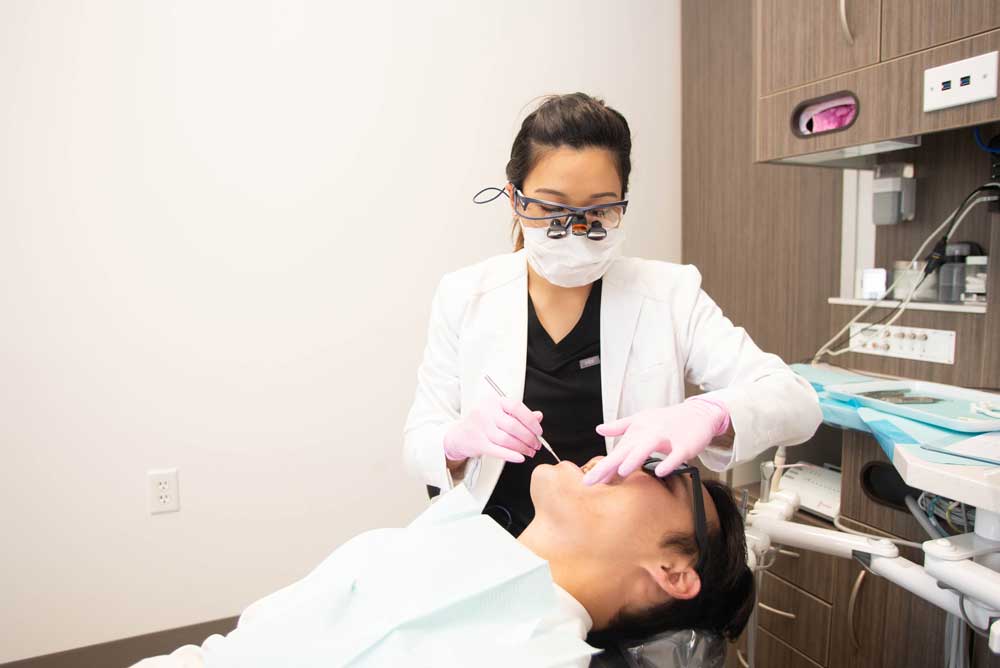
The drawbacks consist of:
- Amalgam fillings may produce hot and cold sensitivity as your mouth adjusts to the new filling over the first few weeks.
- Amalgam fillings are not recommended for patients allergic to metals since they may react negatively.
- They don't keep their distance.
Exist Any Substitutes for Amalgam?
You can talk to your dentist about your amalgam silver fillings substitute options. Indium-containing dental amalgam is now available; it helps hold onto the mercury, reducing the likelihood of it escaping the filling. In addition, amalgams with a high copper content have a lower mercury content. Since composite resin is tooth-colored, it may have a more appealing appearance. But unlike amalgam, it wears down more quickly and takes longer to set; thus, it's only suitable for some applications.
Concluding the matter
Since amalgams are inexpensive, rugged, and long-lasting, they can still be the material of choice for significant back teeth restorations. Alternative materials require less tooth material to be removed, adhere to the neighboring teeth, and have a better appearance than amalgams. For more information, visit the dental walk in near me.
Do you expect to make your smile look nice? You have several options at your disposal. The use of veneers is one among them. With dental veneers, you can cover your teeth to make them look better. This best fixes one or more teeth' colour problems and morphology, structure, and location issues. Discover the comparison that Sunny Dental has elaborated to help you see more clearly.
What are veneers made of composite materials?
What are composite veneers? Composite veneers are dental repairs that cover up or fix defects in the teeth using safe materials. One or more additional layers of resin composite material are used to assemble veneers. Your teeth will be covered by a veneer created to order. They can replace merely a portion of your teeth and the entire tooth.
Veneers can also be used to fix various dental problems, such as damaged teeth, misaligned teeth, and gaps between teeth.
Who is eligible for veneers?
Dental veneers are intended to improve your smile by hiding any irregularities or flaws in your teeth' size, shape, or colour. Teeth crooked, chipped, discoloured, or stained can be examples of these anomalies. Composite veneers can also be used to fix teeth with worn enamel. Before getting veneers, you should receive treatment for any gum disease or dental decay.

A person's appearance is greatly enhanced by worn-out front teeth, which can be restored with composite veneers, improving both the appearance and functionality of the teeth.
Varieties of composite veneers
There are two varieties of composite veneers that a dentist could provide to you.
Direct veneers made of composite material
Composite resin fillings are directly sculpted onto the teeth to create direct composite veneers. Before starting the veneer, the dentist minimally invasively prepares the teeth. Since the straightforward hybrid procedure is convenient for the dentist and the patient, most dentists will choose it.
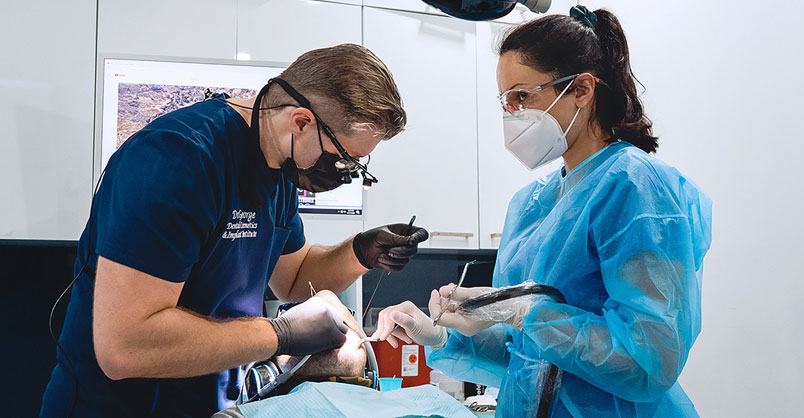
veneers made of composite materials indirectly
The method of application, not the substance itself, distinguishes direct from indirect composite veneers. Until the indirect veneers are created, you will receive a set of temporary veneers. The indirect composite veneers are bonded to your teeth with a glue coating during your subsequent session.
What is the lifespan of composite veneers?
Composite veneers are robust, long-lasting, and, with proper post-operative maintenance, can last an average of five to seven years. Veneers may need to be replaced if they get discoloured or broken over time. It's critical to establish a regular brushing schedule with non-abrasive toothpaste and to refrain from biting on hard items. Composite veneers won't get stained if one stays away from tea, and coffee and wine will remain dry.
In summary
Composite is a material used extensively in dentistry that is becoming increasingly popular for several reasons. It is beautiful and has an excellent track record of longevity. Composite veneers are a desirable substitute for porcelain veneers because they are affordable, simple to maintain, and can be applied in only one appointment. You must visit affordable veneers near me to learn more about composite veneers.
Treatment for sleep apnea is crucial since it can have an immensely negative effect on a person's physical and mental health. Dental sleep medicine is a specialized area of medicine that treats individuals with obstructive sleep apnea and other sleeping problems.
A person with sleep apnea will eventually develop several difficult-to-prevent symptoms after being affected for a long time. Among these symptoms include lethargy and motivation deficits. Although either of these may cause long-term harm, a dentist can assist in treating sleep apnea, enhancing the patient's quality of life.
Understanding some sleep apnea treatment options
Do you want more information about dental sleep apnea medications? Here are some therapeutic options for patients who want to feel more motivated and in control of their energy levels.

Modifications to diet or way of life
Simple lifestyle modifications are among patients' most popular strategies to increase their motivation. When patients modify specific daily routines, their energy levels can improve dramatically. Unexpectedly, a person's eating habits and overall health significantly impact how they sleep. Making certain lifestyle adjustments helps correct or at least alleviate sleep apnea.
Losing weight is another facet of changing one's lifestyle. Losing weight is a common way for persons with sleep apnea to get relief. Additionally, the body might experience increased energy if extra weight is lost. Ultimately, discussing weight loss for sleep apnea treatment with a medical expert is better.
oral appliances
An oral appliance is another dental sleep medicine treatment option for patients with sleep apnea. Dental professionals are qualified to recommend and carry out several forms of oral appliance therapy. One is similar to a mouthguard and is called a mandibular advancement device. The other is a mouth splint-like tongue-retaining device. Both forms of therapy support keeping the airway open while you sleep. In emergency case you have to visit a dentist emergency near me.
Decreased likelihood of depression
A sleep study that followed patients for eighteen years discovered that having sleep-disordered breathing increases the risk of depression by over 2.5 times when compared to people who don't have any sleep disturbances.
Your body needs time to relax. Your emotional and physical health both deteriorate when you don't get enough.
Decreased mortality risk
Your life may be shortened by sleep apnea. Even after handling for age, sex, body mass index, and other variables, patients with sleep apnea had a noticeably greater death risk in the same follow-up research that we previously discussed.
Reduced chance of illness
Your risk of a number of serious illnesses is significantly increased if you have sleep apnea. Your reproductive, neurological, digestive, endocrine, respiratory, and circulatory systems are just a few of the systems in your body that it negatively impacts.

You have an increased risk of stroke, Type 2 diabetes, fatty liver disease, and hypertension. Your chance of ill health will decrease the sooner you get treatment for sleep apnea.
Restores your daily energy to normal
You may have had sleep apnea for a long time and are unaware of how much your energy has decreased. Sleep apnea snoring may be disrupted up to ninety times an hour if you have sleep apnea, preventing you from getting adequate restful sleep.
You may often feel sick and react excessively to small annoyances. The body reacts negatively to sleep deprivation.
Concluding the matter
Getting treatment for sleep apnea is essential for boosting motivation and energy levels. Seeking advice from a sleep apnea dentist with experience treating sleep apnea is highly recommended. Our team can help you begin the right course of treatment.
Introduction
Everyone wants to outshine their gleamed and pearly white teeth in front of public gatherings or among family relatives, but they feel embarrassed because of misaligned, chipped, or broken teeth. Six Months Smile is a revolutionary approach to orthodontic treatment, though it has gained immense popularity because of speedy recovery, quick results, and painless. It is a non-invasive dental procedure that does not cause any harm or pain. The connection between fluoride and six month smile problems plays a significant role in the success and longevity of dental treatment.
Briefing About Six Month Smiles
Six Month Smiles is an orthodontic treatment that uses clear braces and tooth-colored wires to give a new look to a patient's smile in just six months. Its aesthetic and pleasing appearance has become a preferable choice for many who seek options for crooked, chipped, or misaligned teeth. The treatment focuses on visible front teeth, achieving remarkable results in approximately six months, making it an attractive option for those seeking a quicker, more visually appealing solution.

The Role of Fluoride in Dental Health
Fluoride Treatment Houston and six month smiles are dental treatments that protect tooth enamels in the journey of the orthodontic process. At the same time, fluoride protects tooth enamel from erosion or other dental issues when dentists adjust brackets and wires during the dental treatment. Start using fluoride toothpaste in your daily routine to help maintain oral hygiene practices. It acts as a protective shield, transforming into a straighter smile that is not compromised by enamel vulnerability, contributing to the overall success and durability of the treatment.
A Symbiotic Relationship Between Fluoride and SixMonth Smiles
Protective
The braces used in the SixMonth Smiles orthodontic can cause maintenance challenges for enamel. However, fluoride acts as a shield that helps maintain the integrity of the enamel.
Tooth Decay and Germs
Brackets and wires used in SixMonth treatment have sharp corners where bacteria may grow and develop, which creates trouble for many people. Fluoride Solution For Teeth fights off decay or stains, reduces the risk of tooth decay and cavities, and helps maintain overall health.

Enhancing Orthodontic Success
Fluoride solutions have a major role in contributing to healthier teeth and gums, supporting the success of orthodontic procedures, and reducing the potential for complications.
- Brush your teeth with fluoride toothpaste twice a day, which has proven effective for strengthening the enamel and maintaining overall health and well-being.
- Rinse your mouth with a fluoride mouthwash as it protects your mouth from entering bacteria or spreading infections. This is a great step towards oral health that you have taken in your life, thus preventing tooth decay, gum disease, and other oral health-related issues.
- It is essential to consult with a dentist for professional fluoride treatments, protect individuals from unwanted dental problems, and ensure the longevity of a complete smile makeover.
Conclusion
Now you know about the symbiotic relationship between a six-month smile and fluoride that has taken oral health to the next level. You can maintain your oral health care by continuously using fluoride solutions and mouthwash that keep germs or infections away from your mouth. Houston dentist no insurance helps you give the best advice on how to take care of oral health.
Introduction
Advancements and innovative solutions in dentistry have made dental treatments more accessible and effective. One of them is dental bridges, which have gained popularity in the past few years for functionality and aesthetics, such as the appearance of a smile. Let’s shed light on the world of dental bridges and understand the key aspects of dental bridges.
Understanding Dental Bridges
Dental Bridges Houston is known for aesthetic purposes, and their main aim is to replace one or more missing teeth. These are artificial teeth followed by crowns adjacent to natural teeth or dental implants. During this dental treatment, healthcare experts bridge the gap that missing teeth can cause. At the same time, it helps restore oral functions, which include chewing, speaking and biting.
What Are Different Types of Dental Bridges
Dental bridges have a wide range of options for filling the gap between missing teeth. Some of them are mentioned below:-
Traditional Bridges
These are the most popular types of bridges, wherein the pontic artificial tooth (pontic) is placed in between the crowns of the teeth on each side of the gap. When both sides of the gap have natural teeth, traditional bridges work well in this situation.

Cantilever Bridges
Healthcare professionals recommend cantilever bridges in a condition where there is only one adjacent tooth next to the gap. The artificial teeth only support a single crown on one side.
Maryland Bridges
Maryland bridges are made from a porcelain framework or metal that gives strong support to the back side of adjacent teeth. You can opt Maryland types of bridges only when your
the teeth on either side of the gap are strong and healthy.
Implant-Supported Bridges
Implant-supported bridges can be used in dental implants instead of natural teeth, and this type of bridge is considered a more secure and effective solution. This is an ideal option when nearby teeth are lost.
What Are the Uses Of Dental Bridges?
Dental Bridges Near Me boosts confidence levels among individuals, and they feel more comfortable or confident in their smiles. Moreover, they can chew food items normally.
When a person loses one or more teeth due to any reason - accidents, broken tooth, tooth fractures that affect their bite, cause discomfort, pain or difficulty in eating. Replacing those affected teeth is a wise way to protect individuals from complex conditions like -
- When a decayed tooth falls out or is removed by a dentist.
- Any accident or injury damaged teeth badly
- Tooth decay or infection deepens within a tooth that neither resolves by a filling nor by a root canal
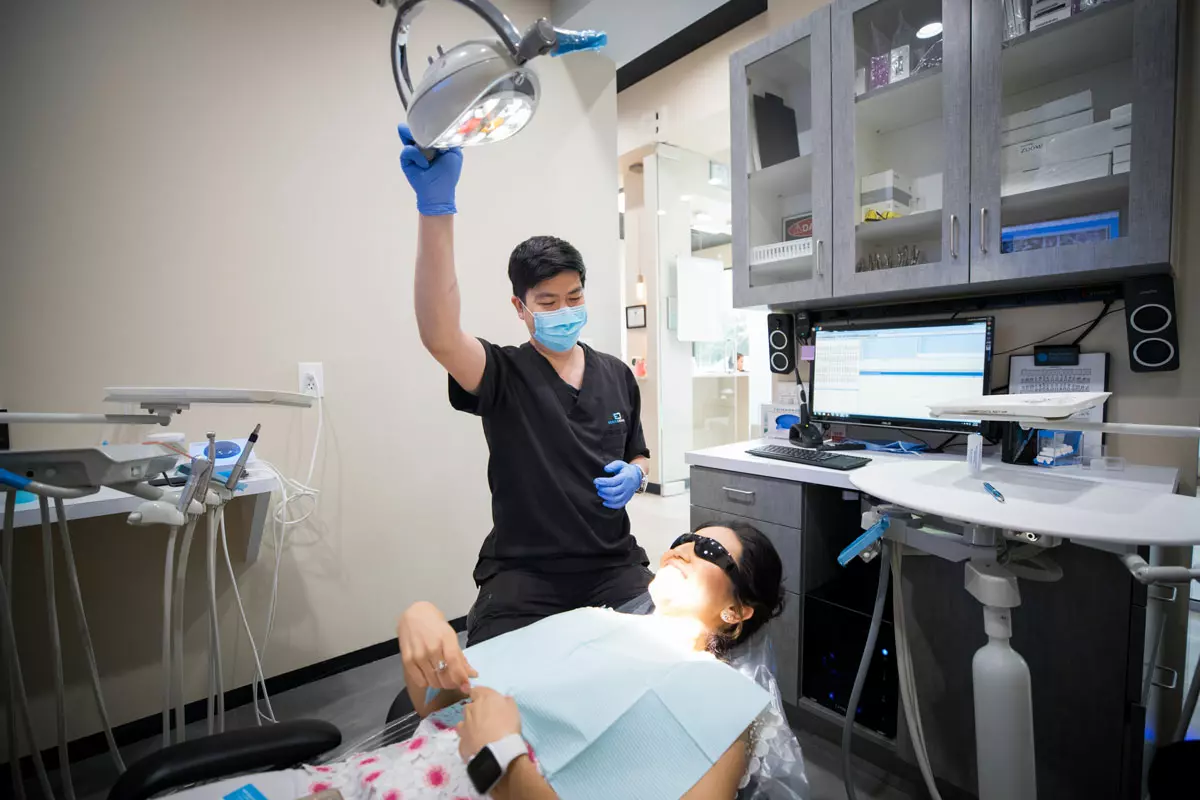
What is the Procedure for Dental Bridges?
Healthcare professionals follow a particular procedure in dental treatment. Let’s have a look at them:-
- Healthcare experts perform a detailed examination to assess the oral condition of the patient.
- Adjacent teeth are prepared by eliminating a small amount of enamel to accommodate crowns.
- For customised fit bridges, healthcare professionals take precise impressions of the teeth.
- A temporary crown or bridge is placed in the affected area with the intent to protect the surrounding teeth.
- Once the permanent dental bridge is ready, it is fixed and adjusted for a comfortable and natural fit.
Briefing
Dental bridges are an effective treatment for missing or decayed teeth as they restore oral functionalities like chewing, speaking and biting. It is considered a reliable solution for people who have been waiting for confident smiles for long. You need to consult an Orthodontic Treatment Near Me and ask them about the different dental treatment options.
In addition to being a medical procedure, dental braces open the door to a confident, healthy smile.
Orthodontists advise braces to treat various disorders, including crowded and crooked teeth, misaligned jaws, and biting abnormalities. Beyond appearances, additional benefits include better speaking, better oral hygiene, and more comfortable eating. One of the tried and true ways to get maximum results is silver braces, known as traditional metal braces.
Understanding The Baces Types
Braces made of metal.
The most popular kind of braces in the world are metal or traditional braces, which have been used for over a century. Braces used to be highly conspicuous and big.
Patients who are youngsters or adolescents are the primary demographic for metal braces.
They operate by applying the braces to the teeth and joining them with a wire. Elastic ties, available in various colours, attach the wire to the braces. At your sessions, every 4–8 weeks, the orthodontist adjusts the wire to shift the teeth.

Brace that Self-Ligates
Self-ligating braces are made of transparent or ceramic material and function similarly to metal and ceramic braces. They also use wires and braces to shift their teeth. Self-ligating braces are different from metal or ceramic braces in that they utilize doors or clips instead of elastic rubber ties to hold the wire in place.
They are thus a wise option for:
- Individuals who are more easily uncomfortable
- Individuals with developmental delays who require orthodontic treatment
- Patients who find it challenging to remain motionless in the dentist's chair for extended periods.
Braces made of ceramic.
Braces composed of transparent, tooth-coloured material are known as ceramic braces. They are less noticeable and more covert than metal braces, but they function in the same way. Patients who wish to straighten their teeth discretely and cost-effectively but don't think Invisalign or lingual braces are suited for them are the ones who use ceramic braces the most. Ceramic braces are more cost-effective than metal braces and are less apparent than the latter.
Braces for Lingual
On the market, lingual braces placed behind teeth are the most specialist and uncommon orthodontic device. This is because they need a distinct set of orthodontic abilities that only a few orthodontists spend the necessary time honing. Since lingual braces are not covered in orthodontic school, orthodontists must acquire the skills to use them properly. Adults with significant orthodontic needs who want invisible braces are ideal candidates for lingual braces behind the teeth.

Clear Aligners And Invisalign
The last ten years have seen a sharp increase in the use of clear aligners. Patients who had braces as children and only require a "touch up" or who have mild to moderate dental issues like misaligned teeth, a significant overbite, no problems with the alignment of their jaw, or gaps between their front teeth (open bite) can benefit significantly from Invisalign.
Lingual braces beneath the teeth or lingual braces and Invisalign together can provide a distinctive and aesthetically pleasing treatment option for more complicated issues.
Concluding The Matter
In addition to enhancing dental health and function, teeth braces can improve your appearance. There's no shortage of orthodontic solutions these days. Find a dentist near me walk in who performs pleasingly for you and can be assisted by your orthodontist or dentist. You can have a gorgeous, healthy smile for many years with an investment in braces.
Introduction
Any dental problem that requires immediate medical care is referred to as a dental emergency. All dental issues do not come under emergencies. But when bleeding won't stop, or you're experiencing severe pain, and you're not getting relief with medications like Ibuprofen. Broken facial bones or sometimes accidents can adversely influence your mouth structure. These are conditions that require dental emergency care. If you are experiencing any of these conditions and residing in Texas, seek dental emergency houston.
What Should I Do in a Dental Emergency?
If you're seeking a dental emergency, contact your family doctor or regular dentist for further guidance. Many dentists list their contact numbers on the website for emergencies. If it's unavailable, visit your nearest dentist for emergency dental care.
What is Listed or comes under a Dental emergency?
Some of the types of dental treatments that require same day dental emergency. Some of them are mentioned below:-
- Badly cracked tooth.
- Knocked-out tooth.
- Extruded (partially dislodged) tooth.
- Dental abscess (swelling of your face and jaw).
- Lost or broken dental restoration.
- Severe soft tissue injury (like a busted lip or deep cut).
- Excessive Bleeding
- Throbbing Pain

What Emergency Rooms Provide You During Dental Treatment?
The staff at the emergency room may prescribe antibiotics or pain relievers that provide you relief from pain and swelling. However, they don't perform dental restoration procedures like crowns or fillings. You need to visit your dentist as soon as possible once dentists return to their office during visiting hours after taking dental emergency care at the ER.
What To Do When Not Sure About Dental Emergencies?
There are some situations when you cannot determine whether you need immediate dental care. If this is a situation happening to you. It's okay to wait for an appointment for visiting hours. Some examples of such issues that aren't considered dental emergencies but you need an appointment are mentioned here:-
- Mild Pain
- A minor chip or cracked tooth
- Debris or Plaque
- Broken braces
- Food items or some items that are stuck between your teeth
- Minor soft tissue injury (like a small cut or sore).
- Remember that if you're dealing with severe pain or excessive bleeding, you should seek a dentist open on saturday emergency

What Are Some Effective Ways For Managing Dental Symptoms Until Visiting Dentist?
Follow the below-mentioned effective tips if you're dealing with any dental emergency care
- Rinse your mouth with lukewarm water
- Brush your teeth when something stuck in your mouth between teeth
- Avoid consuming caffeinated beverages or sticky/ starching foods.
- Floss your teeth properly
- Take pain relievers such as Ibuprofen. You don't need any prescription to purchase this medicine.
Summing It Up
A dental emergency is any dental condition that creates injury in your mouth, like excessive bleeding, severe pain, or broken facial bones. If left untreated, it worsens the situation and creates more complex problems, such as the spread of infection to surrounding teeth, tooth mobility, and tooth loss. So, it is essential to get advice from the local dentist open on saturday.
In addition to being one of the most beautiful human expressions, your grin is unique and priceless. One of the first things people notice about you when you meet them for the first time is your smile. If your smile is yellow, it detracts from the rest of your appearance. It has been demonstrated that teeth whitening procedures clean your teeth from the inside out and remove stains and dark spots.
You have undoubtedly noticed the buzz about teeth-whitening techniques that you can find almost anywhere.
How does it operate?
There are steps involved in the laser teeth whitening technique that are performed when a patient visits the dentist. The teeth must first be thoroughly cleaned, and any plaque must be removed.
Following a thorough cleaning, the dentist will apply a peroxide gel to your teeth and allow it to sit for a few minutes. This extremely potent gel will give your teeth the best possible cleaning while fighting stains. Your teeth may become seven to ten shades whiter in a single session compared to when you first arrived at the teeth whitening near me.
Advantages Of Laser whitening teeth
What distinguishes laser tooth whitening from other whitening techniques in terms of popularity? Let's consider a few of the usefulness.
1. Teeth Whitening with Laser Is Quick.
In just one session, laser whitening can significantly whiten your teeth. Although more sessions might be required to achieve the most impact, patients frequently report observing a seven to eight-shade difference after just the first session.

- Laser Teeth Whitening Works Well
Only surface stains can be eliminated with whitening strips and specialized toothpaste. On the other hand, even stains deeper than the enamel can be removed at their source using laser teeth whitening.
3. There is Less Damage from Laser Teeth Whitening
Teeth whitening with a laser is non-invasive. No gadgets or extra tools utilized could irritate or bleed the gums, and no laser whitening aftereffects exist. Moreover, many over-the-counter bleaching solutions used in at-home methods can be very abrasive, which might harm the enamel.
4. More excellent Durability with Laser Teeth Whitening
The endurance of the whitening results from any operation mainly depends on your regular dental hygiene regimen. In addition to preventing plaque development, brushing your teeth at least twice a daytime, using mouthwash, and doing any other actions your dentist has prescribed can help prevent stains from becoming permanent.

Effects of Laser Teeth Whitening on the Side
Whitening teeth with a laser is a secure and efficient process. On the other hand, it may have mild, transient adverse effects, such as:
- momentary discomfort
- sensitivity of teeth
- slight inflammation of the gums
Extreme negative effects are uncommon, although they can happen to certain people. To avoid these side effects, refrain from consuming hot or cold food or beverages for a few days following the surgery. If You face any of these side effects, get your first appointment with a teeth whitening dentist near me.
Concluding the matter
One type of cosmetic dentistry therapy is laser teeth whitening. Lasers and bleaching gel are used to lessen tooth discolouration. Your teeth may seem whiter and more promising as a result of this. Laser teeth whitening works better than at-home procedures like whitening strips.
In addition, there is a chance of tooth decay, erosion, and heightened sensitivity following the surgery. Speak with a laser teeth whitening New York to find out if laser teeth whitening is good for you.
Introduction
Maintaining oral health care is not limited to brushing and flossing; it consists of more specialised treatments. However, root canal treatment is one among them that dentists often recommend to protect existing teeth and preserve the natural appearance of teeth. You must contact a root canal specialist near me and discuss your oral health issues with them, which will help you make effective decisions.
Why Root Canal?
A root canal treatment becomes necessary when the pulp is collected at the teeth's centre and gradually spreads to nearby teeth. This condition arises from deep cavities, accidents, fractures, or other dental issues. The collected pulp houses blood vessels and nerves; if left untreated, it can cause further serious complications such as pain and discomfort. You must avail of emergency root canal services in situations like excessive bleeding or intense pain. Let's discuss why the dentist suggests root canal treatment:-

Prevention of Pain
Dentists recommend root canal therapy because of pain relief, a major contributor to maintaining oral health care. An intense toothache, tooth sensitivity while consuming excessive heat or cold items and edema can be signs of pulp infection. Root canal treatment provides relief from discomfort and stops spreading the infection to other areas of the mouth.
Preserve Natural Teeth
In dentistry, preserving existing natural teeth plays a significant role when talking about oral health care. A skilled dentist eliminates pulp from the tooth while preserving its outer structure by performing a root canal. This reduced the risk of tooth extraction by protecting the tooth's natural look and function.
Protects from further complications
More severe complications may arise when infections or regular teeth cleaning are not promptly treated. A dental infection has the potential to spread to nearby teeth, gums, and the jawbone. By stopping the infection at the right time, root canal therapy helps to avoid the need for more complex and invasive procedures.

Long-Term Oral Health
Teeth with root canal therapy act as a lifesaver if taken care of properly. Dentists guarantee that a treated tooth stays a functional mouth component by extracting the infected pulp and tying the affected teeth. This keeps your teeth healthy for a long time and keeps you away from dental bridges or implants. Seek out dentist clinics for root canal near me as it is easily accessible and approachable to your home or office.
Wrapping it up
A root canal treatment sounds daunting, but actually, it is not. This effective dental treatment aims to protect natural teeth and help alleviate symptoms like pain and discomfort. With the advancements in dentistry and anaesthesia, the process gets simplified and comfortable, allowing healthcare experts to perform the surgeries efficiently and effectively. Some people want to know questions ask about how long does a root canal last. It can last a long life but is possible only with proper care and maintenance. After root canal surgery, you must visit dentists for follow-up sessions and maintain oral hygiene practices.
Dental veneers have become a popular cosmetic dentistry solution, providing individuals with a radiant and flawless smile. While these thin porcelain or composite resin shells enhance aesthetics, many wonder about the impact on the underlying tooth health. In this comprehensive guide, we delve into the intricacies of "Understanding Tooth Health Beneath Dental Veneers."
The Basics of Dental Veneers:
Dental veneers are custom-made shells that adhere to the front surface of teeth, addressing imperfections such as stains, chips, or misalignment. The procedure involves minimal tooth reduction, making it a less invasive option than crowns. However, the process raises questions about the long-term effects on the natural teeth beneath the veneers.
The Minimally Invasive Nature:
One of the key benefits of dental veneers is their minimally invasive nature. Unlike crowns, which require more significant tooth reduction, veneers preserve a substantial portion of the natural tooth structure. This aspect minimizes the impact on tooth health, allowing for a balance between cosmetic enhancement and the preservation of oral integrity.
Preserving Tooth Enamel:
To understand the impact of veneers on tooth health, it's essential to recognize the role of enamel preservation. During the veneer placement process, a thin layer of enamel is typically removed to ensure a seamless fit. While this minimal reduction is irreversible, it is a conservative approach compared to more invasive procedures.
Long-Term Tooth Health Considerations:
Risk of Sensitivity: The removal of enamel may increase the risk of tooth sensitivity, particularly immediately after the veneer placement. However, this is often temporary, and any discomfort can be managed with the guidance of your dentist.
Potential for Decay: While veneers themselves are resistant to staining, the junction between the veneer and the natural tooth may be susceptible to decay over time. Maintaining excellent oral hygiene practices is crucial to mitigate this risk.
Veneer Lifespan: Dental veneers are durable and can last for many years with proper care. However, they may eventually require replacement, and the condition of the natural teeth beneath them becomes a factor in deciding future treatment.
Monitoring Oral Health: Regular dental check-ups are crucial to monitor the health of teeth under veneers. Dentists can identify issues early, address concerns, and ensure the overall well-being of both the veneers and natural teeth.
Balancing Aesthetics and Health:
The decision to opt for dental veneers involves finding a delicate balance between achieving the desired cosmetic results and preserving long-term oral health. Individuals considering veneers should engage in open communication with their dentist in Okotoks, discussing concerns and expectations to ensure a comprehensive and personalized approach.
Conclusion:
In conclusion, "Understanding Tooth Health Beneath Dental Veneers" requires acknowledging the nuanced relationship between cosmetic enhancement and oral well-being. While cosmetic veneers in Okotoks provide a transformative aesthetic solution, it is essential to recognize the importance of ongoing oral care and regular dental check-ups. By embracing a holistic approach, individuals can enjoy the benefits of a dazzling smile while ensuring the longevity and health of their natural teeth beneath the veneers.
In recent years, Invisalign has become the talk of the orthodontics town, promising a cautious and convenient alternatives to braces. And why not? It has to be, as this is the most comfortable and convenient way to get straight teeth and a sparkling smile. A smile is the only original ornament that everybody has as given by God. Many wonder if Invisalign can address all types of orthodontic issues. Yes, through this article, you will get a clear idea of how and what kinds of problems can be cured by Invisalign. Let's delve into this question to comprehend the abilities and limits of Invisalign antidote.
What is Invisalign?
An orthodontic practice called Invisalign symmetrical teeth without the need for metal braces. With a string of custom-made, clear braces named Invisalign, your teeth will slowly be gently moved into the correct position. They are less apparent than conventional metal braces because they are clear and removable. At the same time, partially undetectable, Invisalign aligners fit over your teeth tightly and are far less evident than the brackets and wires of traditional braces. Your invisalign dr siteteeth can be perfectly aligned, attractive, and comfortable with Invisalign transparent braces in half the time it would take with conventional braces.
What are the problems treated by the Invasilgn?
This is the tried and tested method of treating the teeth correctly. So, the Invisalign braces will treat the many types of problems like:
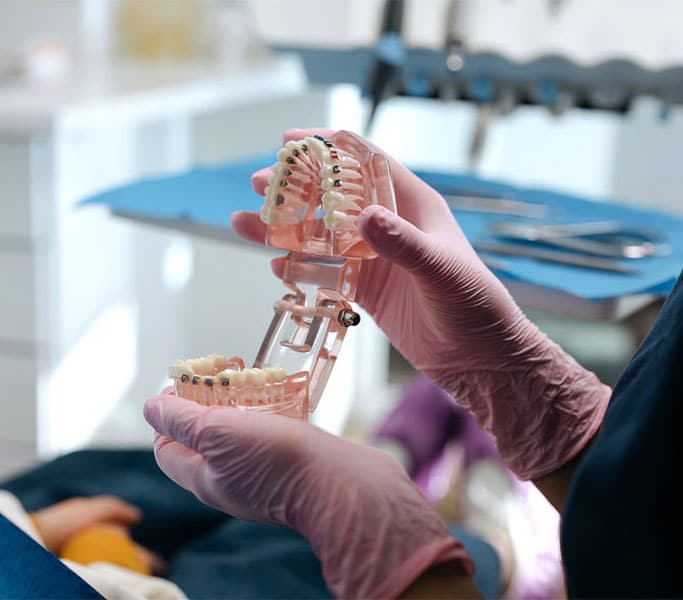
Gaps Between Teeth: With Invisalign, little gaps between your teeth can be effectively closed, giving you a more uniform and aesthetically beautiful smile.
Overbites and Underbites: When the upper or lower teeth extend past the opposing set, overbites and underbites are frequently successfully treated with Invisalign.
Crowded Teeth: By gradually shifting your teeth into their ideal locations over time, Invisalign can assist in clearing space if your teeth are crowded.
For more accurate information, you can check the invisalign dr site, which will assist you in getting all the knowledge regarding the treatments they provide.
Are there any challenges?
There will be a few challenges that cannot be sought with the help of Invisalign.
Jaw Abnormalities: Invisalign primarily concentrates on tooth motion and may not be ideal for restoring significant jaw irregularities. In such circumstances, talking with an orthodontist is essential to choose the best action method.
Critical Misalignments: Conventional braces may be a more practical option in cases of particularly crooked teeth or complex misalignments. Braces can exert more force and control in these positions.
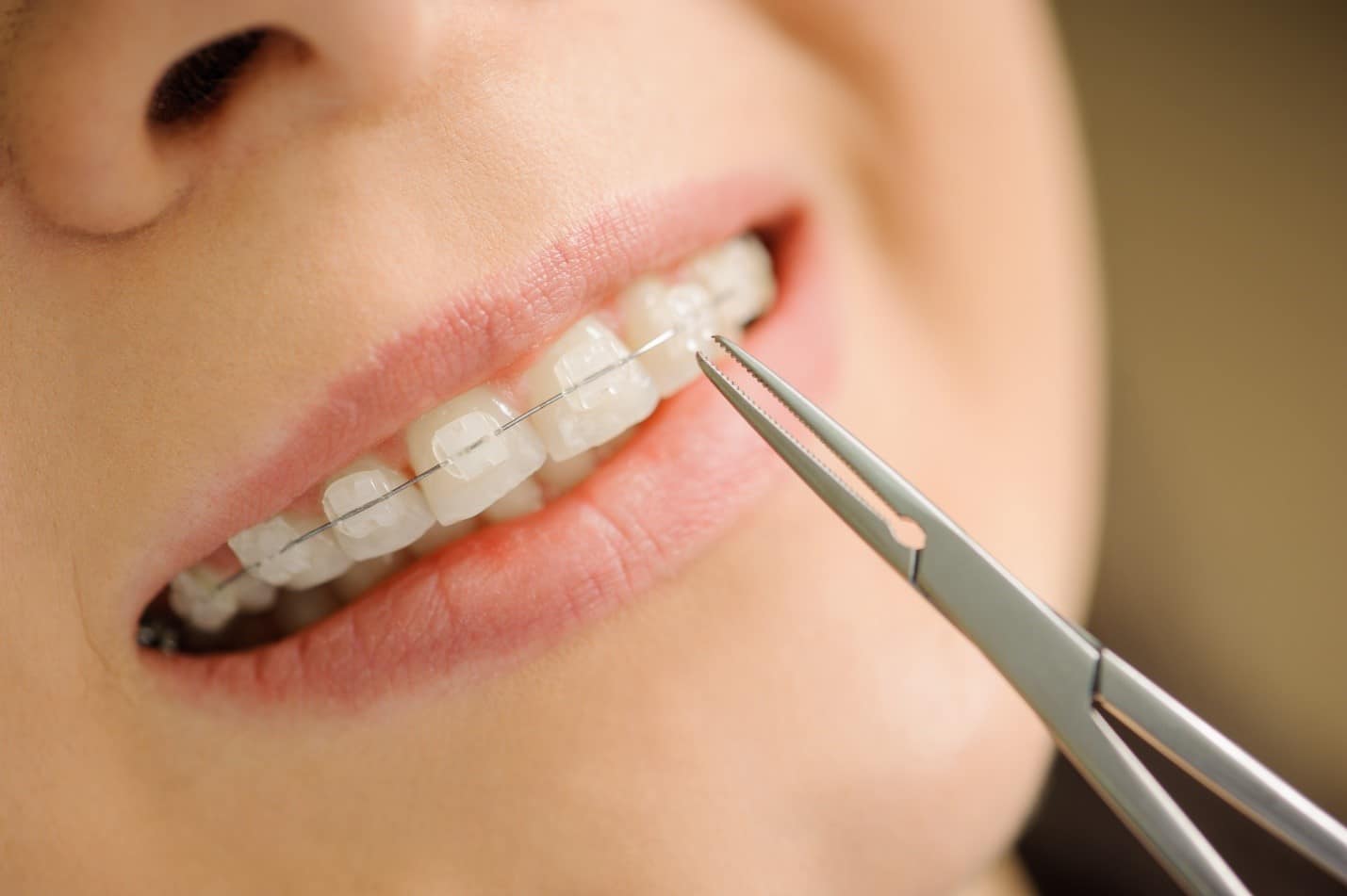
Does Invisalign also offer Customization?
Customization can be done in everything, so why not in the Invisalign treatment?
To customize the dental treatment, orthodontist hallandale fl uses cutting-edge technology to create a 3D model of your teeth, letting them design custom aligners that address your detailed needs. This customized method enhances Invisalign's efficacy in managing various orthodontic requirements.
To Sum up
All of the available treatments for Invisalign have been revealed in this article. Everything is possible thanks to the most modern technological advancements. Additionally, patient compliance is essential to the effectiveness of the Invisalign therapy. Although it works well for mild to moderate situations, more aggressive orthodontic problems might be needed for other therapies. Patients must adhere to their orthodontist open saturday recommendations and wear their aligners for the recommended 20–22 hours each day for Invisalign to function as best it can. Check-ups regularly guarantee that the treatment is going according to plan. Furthermore, Invisalign can be a game-changer for getting a straighter, more self-assured smile with the proper maintenance and dedication to the treatment schedule.
Introduction
Introducing the latest advanced technologies enables dental professionals to provide optimal patient comfort. They assure you that you will feel comfortable, relaxed, and in safer hands. On top of that, dental professionals use the latest dental treatment techniques and methodologies to ensure that patients get a perfect smile and healthy teeth for a long time. For your comfort and accessibility, you should search for affordable veneers near me.
Getting veneers has become a popular choice for many people that can make a complete smile makeover and boost individual confidence. Let's discuss what dental veneers are and how they work.
What do you mean by dental veneers?
Dental veneers are customised thin shells placed on the teeth' front surfaces. This can be used to improve the look and appearance of teeth. Veneers are as much as effective for stains, cracks, gaps or misalignment between the teeth. This can be made from porcelain or composite resin materials. It reduces the risk of tooth extraction, and you will get a more uniform and brighter smile. Before beginning the dental treatment, everyone wants to know about the veneer teeth cost it depends on conditions like severity, consultation fees, and years of experience doctors have in the same field.

Porcelain veneers
Porcelain veneers are known for durability and are the most commonly used type. This looks exactly like natural teeth and is resistant to stains, thus providing a long-lasting solution for a radiant smile.
Composite Veneers
Composite veneers are a more cost-effective solution than other dental treatments, and they are made from a tooth-coloured resin. They provide a significant improvement to your smile. While they are not as durable as porcelain, they can still significantly enhance your smile.
Advantages of Dental Veneers:
Aesthetics
Dental veneers have been proven effective for solving various cosmetic concerns such as stains, discolouration, pearly white teeth, and uneven gaps between teeth.
Stain resistance
porcelain veneers are stain-resistant so that you can get a brilliant and colourful smile for many years.
Tooth Alteration
In this dental treatment, a small amount of enamel is removed to heal from stains or any other teeth issues.
How long do dental veneers last?
Dental veneers can generally last between 10 to 15 years, but their lifespan depends on numerous factors. It includes how you care for them, follow-ups with dentists, regular dental check-ups, and habits like teeth grinding. These all are conditions that influence the durability of dental veneers. With time, veneers may start wearing and tearing, which requires replacements. They are a durable cosmetic option, but their longevity depends on maintaining oral care and hygiene. To keep your brilliant smile intact, see a dentist for maintenance and assessment if any problems develop. If you are affected by tooth decay or bleeding from the gumline, don't stop contact with Sunny Isles Emergency Dental Care.

How to Take Care of Dental Veneers?
Taking care of dental veneers requires to follow the process mentioned below:-
Oral Hygiene
To extend the life of your veneers, brushing, flossing, and routine dental examinations are necessary.
Steer Clear of Staining Substances
Even though porcelain veneers are stain-resistant, it's still a good idea to restrict the amount of stain-causing foods.
Conclusion
Dental veneers are effective solutions for people seeking a transformative change in their smile. It has become a popular choice for many people in cosmetic dentistry because of its durability, longevity and appearance. If you are dreaming of a pearly white smile, take advice from a dentist and ask them whether dental veneers are the right choice for you or not.
You know how difficult it is to eat or do your daily dental activities with various problems in your teeth. If you have problems like chewing or biting, then in that case dental inlay and onlays can come in handy for you. This article will help you to learn how crucial these dental procedures are to regaining the functionality of your teeth.
Dental Inlays: Fixing Small Tooth Cavities
Dealing with cavities is a common problem in maintaining good oral health. When you have a cavity that is too large for a filling but not severe enough to need a crown, dental inlays act as little heroes to save the day.
What Are Dental Inlays?
The emergency walk in dentist near me will install dental inlays, which are created to order, on the chewing covers of your rear teeth. The teeth in the back, commonly referred to as molars and premolars, are the ones in charge of the majority of food grinding and chewing.

How Do Dental Inlays Work?
Assessment:
In order to decide whether an inlay is the best option, your dentist will first evaluate your tooth. An inlay is typically the best option if the cavity is too big for a conventional filling but not big enough for a crown.
Preparation:
The decayed portion of your tooth will then be gently removed by the cosmetic dentistry near me, who will also take an impression of it. Your custom-made inlay is created in a dental laboratory using the imprint that was sent there.
Placement:
Once your inlay is complete, your dentist will use a special glue to adhere it firmly to your tooth. This guarantees a snug fit and aids in restoring the tooth's original functionality and contour.
Why Are Dental Inlays Important?
The natural structure of your tooth is crucially preserved, while cavities are properly treated using dental inlays. You can save more of your tooth by opting for an inlay rather than a crown. Your tooth will undergo less modification as a result, and it will keep more of its strength.
Dental Onlays: Repairing Larger Tooth Damage
When your teeth have more severe damage, including large cavities or fractures, these dental restorations are like brilliant knights in shining armor for your teeth.
What Are Dental Onlays?
Dental onlays are made-to-order components that resemble inlays but cover a wider area of the tooth's surface. They are used to restore teeth that have damage that cannot be fully repaired by fillings but is not severe enough to require a full dental crown.
How Do Dental Onlays Work?
Assessment:
Your dentist will evaluate the degree of damage to decide whether an onlay is the best option, much like with dental inlays.
Preparation:
Your dentist will prepare your tooth by removing the damaged portion and making an imprint if an onlay is thought to be necessary. To build your personalized onlay, a dental laboratory receives this impression.

Placement:
The cosmetic dentistry near me will securely glue the onlay to the surface of your tooth after it is completed. This keeps as much of your natural tooth as possible while restoring the tooth's appearance and functionality.
Why Are Dental Onlays Important?
When it comes to regaining the functionality of your teeth, dental onlay is crucial. You may easily chew, speak, and smile thanks to them if your teeth have moderate to severe damage. They offer a sturdy and long-lasting solution. By opting for onlays, you can avoid the requirement for a full crown, which would necessitate more drastic tooth reduction.
Conclusion:
In conclusion, dental inlays and onlays are worthwhile dental procedures that are essential in restoring the functionality of your teeth. Onlays are the preferred choice for more severe tooth damage, while inlays are ideal for treating minor cavities. These specialized restorations assist in preserving the strength and contour of your teeth while removing any discomfort brought on by dental problems. Therefore, keep in mind that dental inlays and onlays are available to save your smile the next time you have a dental issue.
The temporomandibular joint (TMJ) plays a significant role in daily routine activities, which include chewing, biting, speaking, and yawning. TMJ Treatment Near Me happens when joints start malfunctioning and can create complexities, which include jaw pain, discomfort, headaches, and face difficulty in opening and closing your mouth. Let's discuss some common with TMJD.
Determining the reason for TMJ Treatment Houston is challenging as the dental conditions are not the same for all. TMJ can happen due to various reasons, such as heredity, arthritis, and jaw injuries, which influence and affect your pain. It is worth noting that many people clench or grind their teeth daily without TMJ issues, and some patients with jaw pain also have this tendency (bruxism).
Diagnosis of TMJ
Apart from physical observation, the dentist asks you to perform some examination to determine the valid reason for TMJ. Some of them are as follows:-

- radiography of the teeth.
- CT scan
- MRI
- TMJ arthroscopy
What are the symptoms of TMJ dysfunction?
TMJ symptoms may vary from person to person. Some of them are mentioned below:-
- Jaw pain.
- Facial pain.
- Shoulder or neck pain.
- Stiffness in your jaw.
- Difficulty opening or closing your mouth.
- Jaw popping or clicking.
- Headaches.
- Migraines.
- Earaches.
- Toothache.
- Tinnitus (ringing in your ears).
What Are the Common Complications of TMJ?
Pain and Discomfort
Individuals who have been suspected of TMJD often deal with activities like talking, chewing, consuming, or eating anything. This dental treatment can take pain to the next level and affect individuals' daily routine activities and quality of life.
Limited Jaw Movement
TMJD can restrict jaw movement activities, making it difficult to open the mouth widely, affecting activities like eating and speaking. However, in severe cases, people cannot open or close their mouths.
Headaches and Migraines
TMJD is a common condition causing jaw joint dysfunction that leads to chronic headaches and migraines, affecting an individual's well-being and productivity.
Ear Pain and Fullness
Pain that occurs from TMJD can cause discomfort and a sensation in the ears. Even ringing in the ears (tinnitus) may occur in certain people. These ear-related symptoms are frequently relieved by treating the underlying TMJD.

Sleep Disturbances
People dealing with TMJD have an adverse effect on sleeping quality because many people are unable to sleep properly because of jaw pain. It can influence sleeping patterns, fatigue, and irritation.
Main Cause of TMJ Dysfunction
There is not a single reason for causing TMJ dysfunction. Here, we have mentioned the different factors that are valid reasons for developing TMJ.
- Jaw injury
- Teeth grinding or clenching (bruxism).
- Arthritis in your jaw joint.
- Malocclusion (when your teeth don't fit together exactly as they should).
- Stress.
Wrapping It Up
Seek medical care advice from a Houston dentist no insurance immediately if you've consistent pain or tenderness in your jawbone or if you're unable to open or close your mouth. Don't hesitate to discuss your concerns with the doctor because they recommend the best treatment line according to your dental condition or mouth structure. Teeth whitening houston is also an alternative to give your teeth an aesthetic smile.
Introduction
Proper oral care and maintenance play a significant role in the overall health and well-being of an individual. The mouth is inevitably a source of bacteria and infection due to consuming eatable items and sugary beverages. Remember that taking care of your teeth is essential, so brush them twice daily, floss them, and rinse them with mouthwash. All these are crucial oral healthcare practices that keep bacteria and infections at bay.
The Need for Deep Cleaning
Brushing and flossing your teeth regularly helps to keep them clean, but with the passing of time, plaque and tartar may develop in the gum line, which further causes gum disease. If left untreated, it worsens the complexities and enhances the risk of other oral health diseases like oral cancer, herpes, tooth decay, and gum disease. However, scaling and root planing, which are other names for deep dental cleaning, are required when issues extend below the surface and impact the roots of your teeth. In this article explains the dental deep cleaning procedure in brief. Let's start:-
The Pre-Procedure Steps
Houston Dentist examines your teeth and gums deeply to identify the major reason for causing oral health issues. Later on, they may ask you to perform X-rays to get deep insights into the teeth' condition. Healthcare professionals can easily identify the reason for dental issues with the help of X-rays and tailor treatment plans accordingly. Moreover, they will help
you understand the treatment process and address concerns or issues that you may have.

Local Anesthesia
Considering the patient's comfort, the dentist may use local anaesthesia to numb your gums and teeth. This helps minimize discomfort, pain, or sensitivity throughout the procedure. You must inform your dentist if you feel any pain or discomfort during the deep cleaning procedure.
Scaling
Dental deep cleaning Houston involves scaling, a process where dentists use specialized tools to remove plaque and tartar buildup over the teeth' surface and below the gumline. It is worth mentioning that deep dental cleaning may take a longer time than regular cleaning as it involves a deeper cleaning of the tooth surfaces.
Root Planing
After scaling, root planing smoothens the roots of teeth by eliminating bacteria and pulp collected in gums. As a result, it promotes healthier gums and protects individuals from future oral health issues.
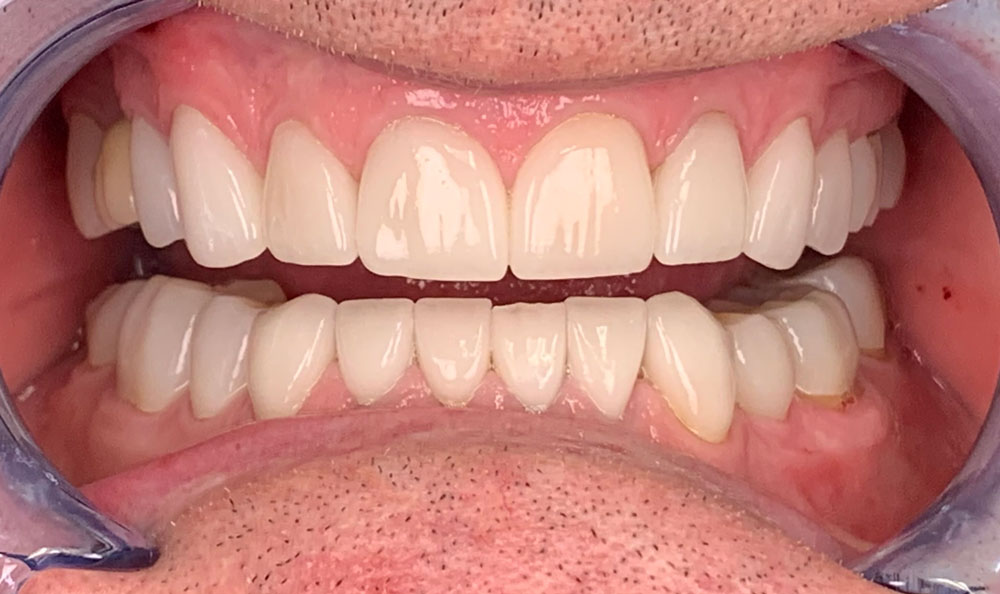
Post-Procedure Care
Once the deep cleaning procedure is completed, the dentist will suggest instructions on taking care of teeth and gums at home. This may include a special toothpaste or mouthwash, or you may have to adjust your oral care routine. You need to visit a dentist at certain intervals, often every six months, for follow-ups for additional care and maintenance.
Possible Discomfort
After a dental deep cleaning, mild discomfort or sensitivity may occur, including tender gums and temperature sensitivity. These symptoms are usually subtle within a few days, and dentists may recommend pain relievers or desensitizing toothpaste for management.
Nutshell
If you have ever experienced pain and discomfort even after completing a dental cleaning procedure, you must avail of the services of emergency dental houston tx. However, the emergency care team will suggest some painkillers or antibiotics to relieve pain. Following the dental cleaning procedure and the dentist's advice, you can lead a healthier and happier life with strong teeth and gums in the long run.
In the glooming world of lights and sparks, people are getting more concerned about their appearance or looks, as everyone wants to outshine in front of the general public. Teeth whitening plays an important role, and this is a powerful yet modern approach to enhancing the aesthetics of our smile. Let's delve into the benefits of teeth whitening:-
Boosts Confidence Levels
Imagine entering a room and beaming, brightening the entire area with your smile. Your confidence level automatically increases by teeth whitening because this is the only reason that will give you an aesthetic and appealing smile. You're more likely to feel confident and prepared to take on the world when your teeth shine.
Removal of Stains
Tooth whitening can be caused by consuming various things, like red wine, tea, coffee, and cigarettes. Teeth Whitening Houston Tx acts like a game-changer, resolving and getting rid of discolour stains. It works like a magic eraser for your teeth, erasing the stains left by everyday vices and habits.
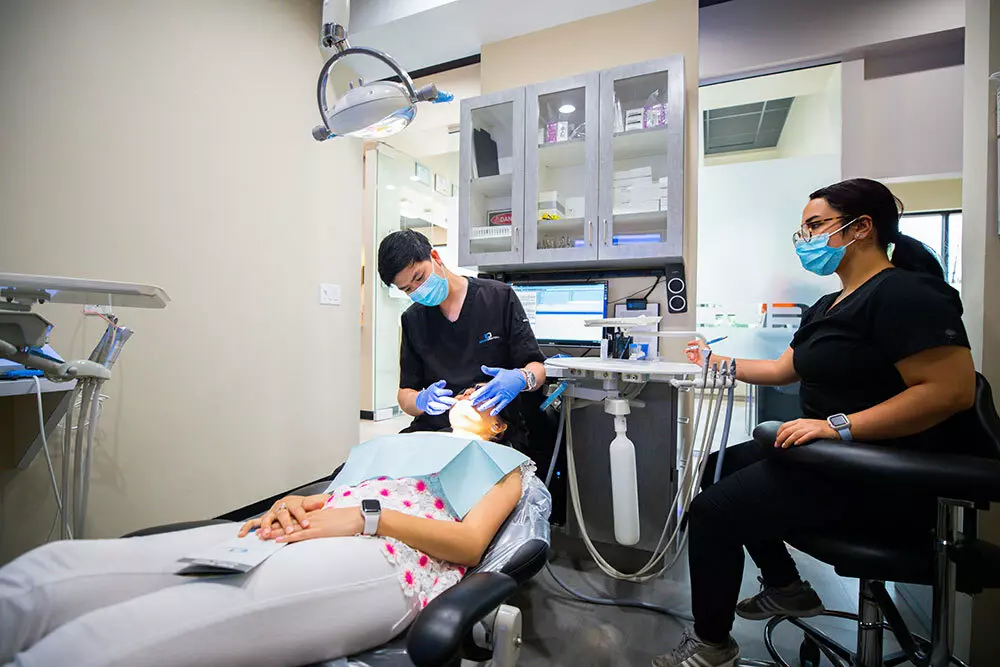
Reversal of Aging Effects
The natural shining of our teeth gets loosened with time or as we step towards older age. Teeth whitening can reverse the effects of aging on your teeth and go back in time. Get set ready for a more youthful and vibrant smile and say goodbye to yellow or discoloured teeth. You can consider Cosmetic Dental Treatment if you want your teeth to have good looks and appearance.
Quick Results
Teeth whitening services near me are famous for effective results as they deliver results quickly. You can observe changes in your teeth just after having one session, and that's why it becomes a preferable choice for many people seeking a fast smile makeover.
Painless
Are you wondering about discomfort, pain and swelling? There is no need to worry about that because teeth whitening is entirely painless. Some people may experience mild discomfort, but it resolves quickly. Dentist no insurance houston often use desensitizing tools in teeth whitening to reduce discomfort and ensure a comfortable visit.
Improves Long Term Radiance
Apart from the quick recovery, Teeth whitening renders long-term benefits. This also renders a long-lasting solution and is possible only when you regularly follow oral hygiene practices. To keep your teeth looking their best, maintain proper oral hygiene and schedule routine dental checkups.
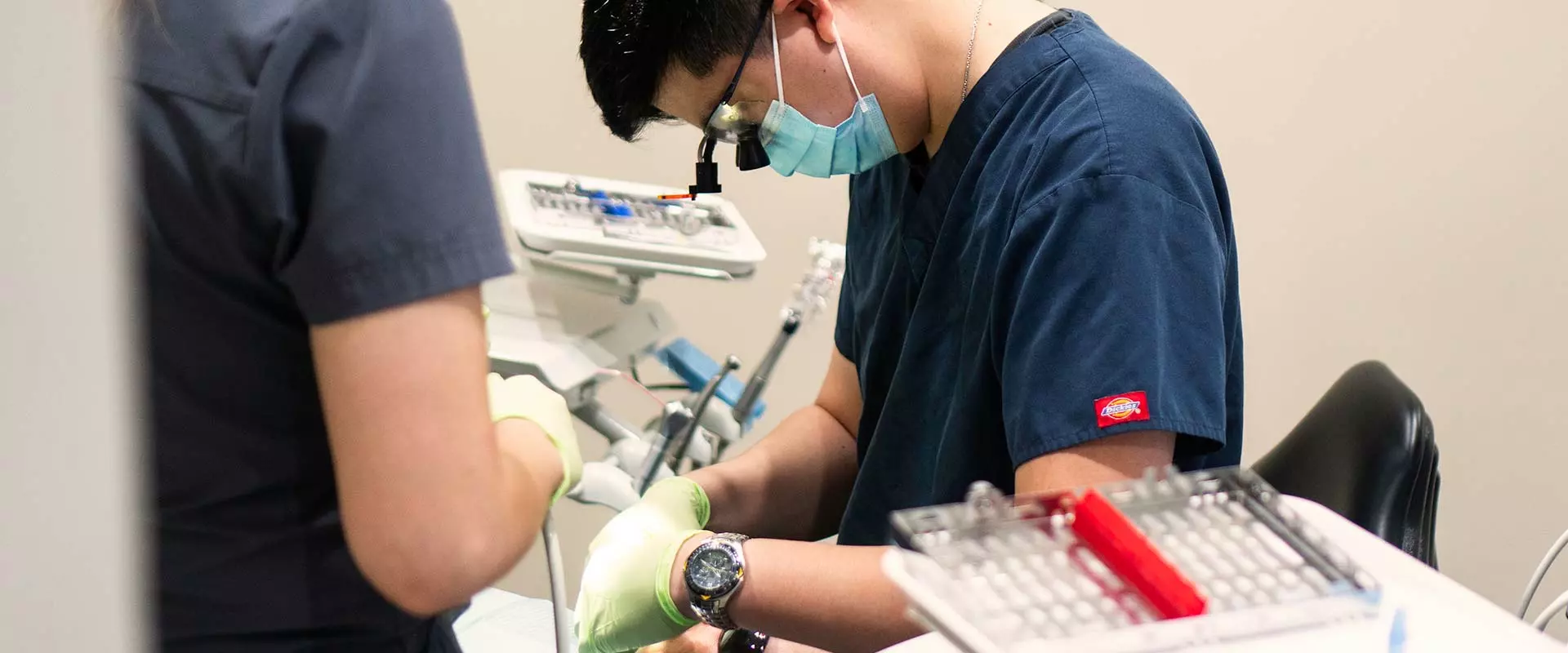
Promotes Dental Hygiene
Getting your teeth whitened might be a driving force behind improving your dental care practices. Individuals who get teeth whitening frequently become more aware of their dental hygiene habits, which promotes general oral health.
Home Kits to Go for Convenience
You can also follow the teeth whitening process from your comfort zone by taking home whitening kits. Using these dentist-recommended kits, you can whiten your teeth at your own pace and according to customized instructions.
Conclusion
You must consult with your teeth whitening dentist once every six months for routine checkups or follow-ups - this is the right way to protect your teeth from germs or bacteria or you can ask your dentist how to use teeth whitening kits at home. Teeth whitening is the only solution for people who want a more brilliant and stunning smile because it can remove stains, boost confidence, and render quick results.
If your teeth are misaligned, worn out, stained, fractured, or unhealthy, your dentist might suggest getting a tooth restoration. There are several tooth restoration options that you should consider. Your teeth's natural function can be restored with tooth repair, and further decay damage can be avoided.
With a dental restoration procedure, a tooth's appearance and function can frequently be restored simultaneously. You may learn more about the many kinds of dental restorations from this article.
Recognizing the types of Dental Restoration
Several dental restorations can be chosen according to your unique needs for oral health:
Crowns
Dental crowns are operated on by specialists to restore broken teeth or to cover large cavities. A crown, also called a cap, completely encloses your tooth.
Your dentist must release some of your birth tooth enamel to place a crown. In other words, they will remove and protect a part of your tooth with a crown.

Components
A cavity is created when bacteria eat away at the enamel on your teeth, making a hole. Dental fillers are commonly used to treat more miniature holes.
Your dentist will extract the overripe piece of your tooth during this operation and then use a composite material that matches your tooth colour to cover the hole. This stops tooth decay and lowers the possibility of more harm.
Root canal treatment
There are instances when a cavity or crack penetrates your tooth to the pulp. An excruciating infection may result from bacteria entering the pulp of your tooth. During this operation, your dentist will extract the diseased pulp, small blood vessels, and nerves inside your tooth. Your teeth' interior surfaces will be carefully cleaned and disinfected, and the canals will be filled with gutta-percha, a rubbery dental substance.
Onlays and inlays
A cavity may occasionally be too tiny for a crown yet too large for a filling. In this situation, your dentist may suggest an onlay or inlay. They are comparable, inlays and onlays. An onlay covers at least one cusp of your teeth, whereas an inlay fills the space between the cusps.
Dental implants
A tiny, threaded post called a dental implant is a substitute for a lost tooth root. Your implant will act like an unpretending tooth after your dentist places a crown on it.
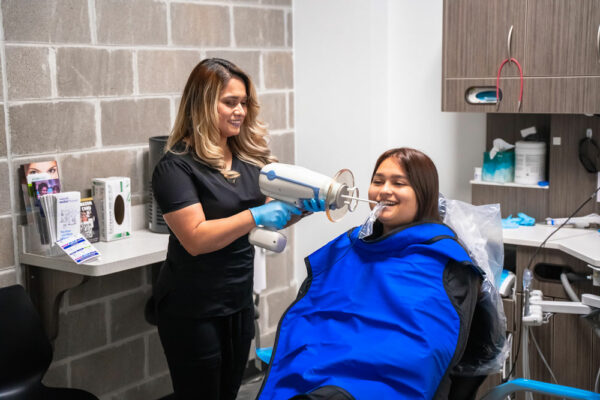
Your dentist can use crowns, bridges, and even dentures to rehabilitate dental implants. Unlike traditional crowns and bridges, your natural teeth don't need to be altered to use implants.
Dental bridges
It can replace a single lost tooth or several missing teeth in a row. Dental crowns support artificial teeth on each side of a bridge. On both flanks of the hole, your dentist will modify (shave down) your natural teeth. The bridge will then be connected to your birth teeth.
When ought I to visit the dentist?
Make an appointment with a dentist if your teeth are missing, broken, or decaying. They can aid in restoring the appearance, functionality, and health of your smile. A walk in dental near me offers emergency services for those needing an urgent appointment.
You should also schedule frequent teeth cleanings and examinations with your dentist. Between appointments, make sure to maintain proper oral hygiene at home.
To give a brief overview
In addition to restoring damaged teeth, restorative dentistry aims to enhance oral function and general health. It might be unsettling to have dental work done, particularly if you've never had it done before. However, the earlier you address a dental condition, the lower your chance of developing further issues. To get more information, visit General Dentist Near Me.